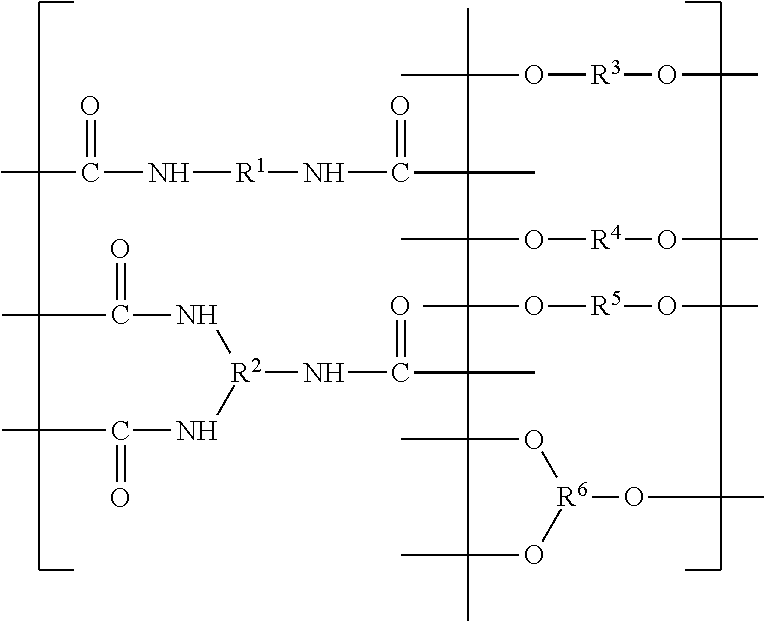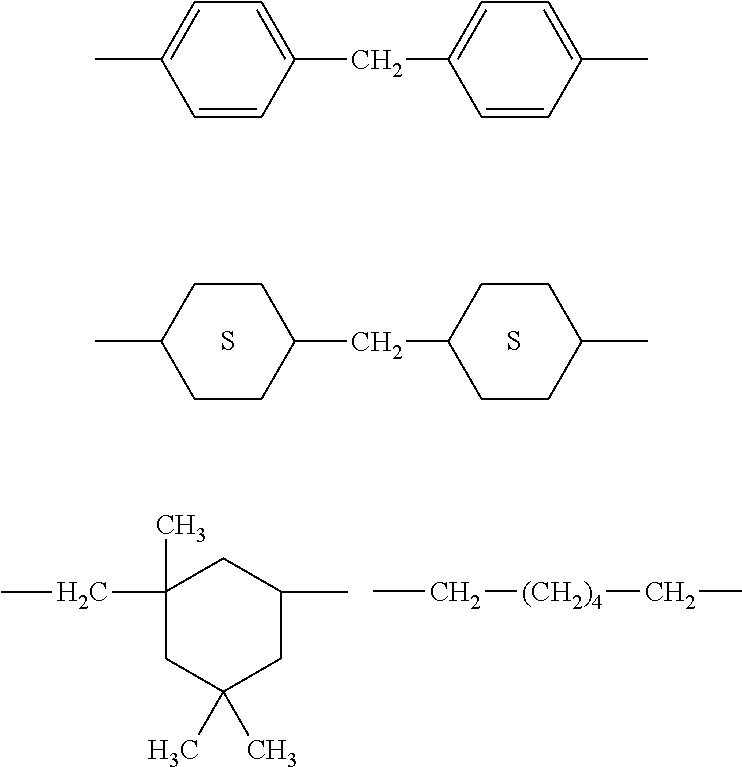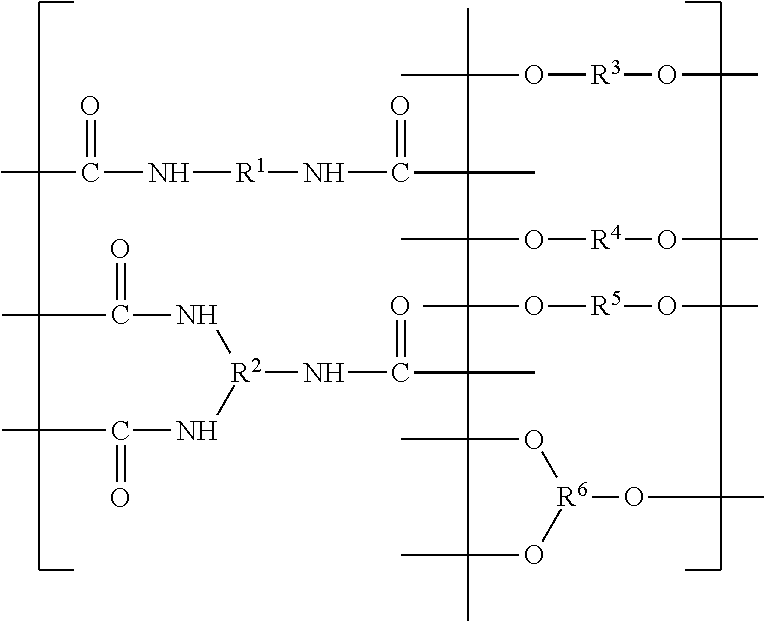Image receiver elements
a receiver element and image technology, applied in the field of image receiver elements, can solve the problems of limiting the type of materials that can be incorporated into the layer, affecting the quality of the image, so as to improve the humidity sensitivity, improve the color density, and improve the effect of dye transfer efficiency
- Summary
- Abstract
- Description
- Claims
- Application Information
AI Technical Summary
Benefits of technology
Problems solved by technology
Method used
Image
Examples
examples
[0088]The polyurethane latexes used in the practice of this invention were prepared as dispersions using the following procedure:
[0089]In a 1-liter, three-necked round bottom flask equipped with a stirrer, water condenser, and nitrogen inlet were placed 35.4 g (0.0177 moles) of polycarbonate polyol (average Mn=2000) (Aldrich Chemical), 4.56 g (0.034 moles) of 2,2-bis(hydroxymethyl)propionic acid (DMPA), 17.87 g (0.1983 mole) of 1,4-butanediol, 52 g of tetrahydrofuran (THF), and 0.50 ml of dibutyltin dilaurate (catalyst). The reaction temperature was adjusted to 65° C. When a homogenous solution was obtained, 55.57 g (0.25 moles) of isophorone diisocyanate (IPDI) was slowly added followed by 10 g of THF. The reaction temperature was raised to 75° C. and maintained for 24 hours to complete the reaction, resulting in an intermediate containing no residual free isocyanate. The free isocyanate content was monitored by the disappearance of the NCO absorption peak by infrared spectroscopy....
PUM
| Property | Measurement | Unit |
|---|---|---|
| Tg | aaaaa | aaaaa |
| thickness | aaaaa | aaaaa |
| thickness | aaaaa | aaaaa |
Abstract
Description
Claims
Application Information
 Login to View More
Login to View More - R&D
- Intellectual Property
- Life Sciences
- Materials
- Tech Scout
- Unparalleled Data Quality
- Higher Quality Content
- 60% Fewer Hallucinations
Browse by: Latest US Patents, China's latest patents, Technical Efficacy Thesaurus, Application Domain, Technology Topic, Popular Technical Reports.
© 2025 PatSnap. All rights reserved.Legal|Privacy policy|Modern Slavery Act Transparency Statement|Sitemap|About US| Contact US: help@patsnap.com



